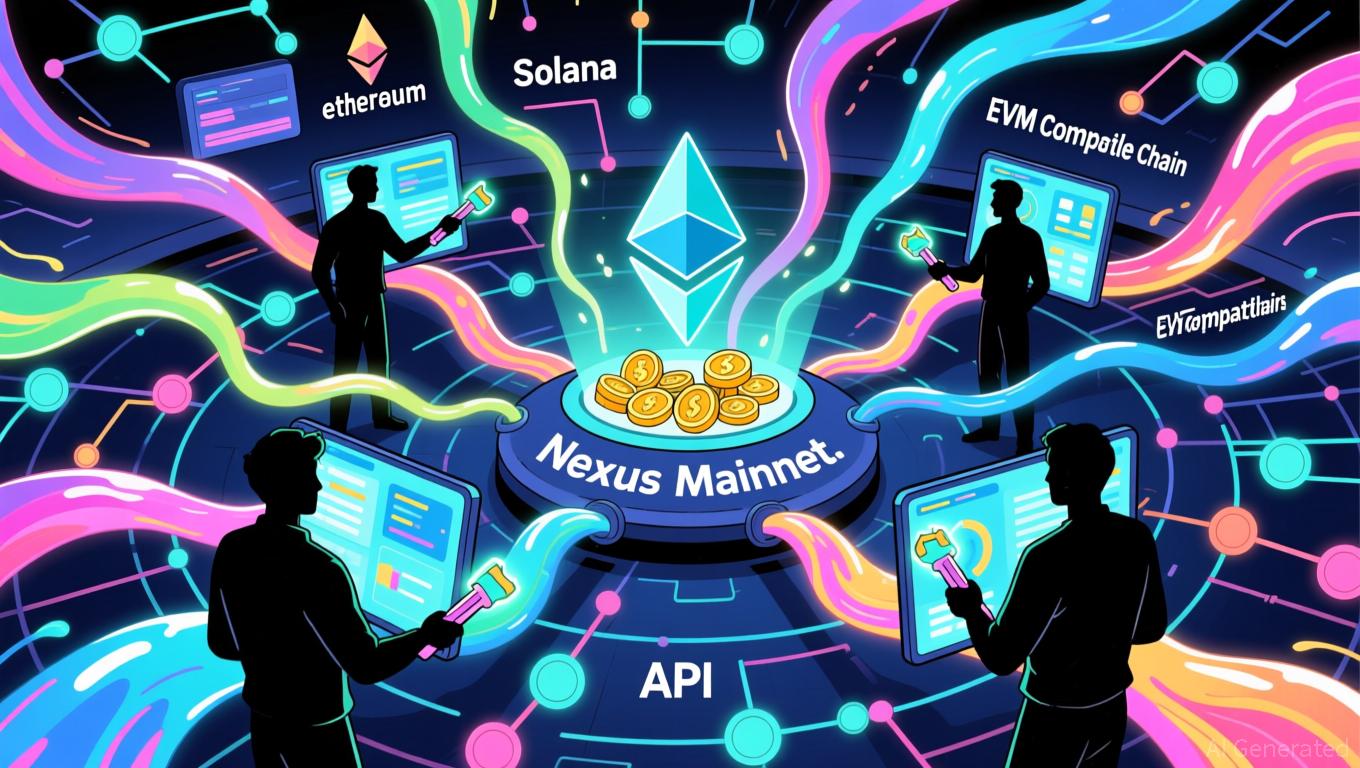How Stablecoins Are Building New Payment Rails for Traditional Finance
A new report analyzes five stablecoin payment networks, determining their ability to overcome new challenges. Generally, Tether- and Circle-focused projects self-select for different clusters of common traits. Foresight Ventures also shared some exclusive commentary on this subject with BeInCrypto. For more concrete data on each project, consult the firm’s report. A New Stablecoin Report The
A new report analyzes five stablecoin payment networks, determining their ability to overcome new challenges. Generally, Tether- and Circle-focused projects self-select for different clusters of common traits.
Foresight Ventures also shared some exclusive commentary on this subject with BeInCrypto. For more concrete data on each project, consult the firm’s report.
A New Stablecoin Report
The stablecoin market is growing to new heights, with many industry leaders predicting far greater accomplishments in the near future.
In this context, Foresight Ventures released a report on stablecoins’ potential, claiming that they could become “the backbone of a global payments rail.”
According to this report, two main factors are converging to boost the stablecoin market. Web3 firms are trying to integrate with TradFi to seize corporate inflows, while financial institutions are looking to blockchain for new functionality and use cases.
Therefore, the market is lifting these tokens up from both directions.
Still, the report is quite clear that not all stablecoins are created equal. The technology has hit certain practical limitations under massive new stress tests, and developers are finding different methods to innovate.
Alice Li, Investment Partner at Foresight Ventures, exclusively shared some insights with BeInCrypto:
“The market is recognizing that general-purpose blockchains may not be optimal for specific use cases. What makes this space particularly interesting is how different projects are approaching the same problem from different angles. It’s not yet clear which approach will prove most successful,” Li claimed.
Differences Between USDT and USDC Approaches
Some of these flaws, such as inconsistent gas fees and slow transaction times, are particularly concentrated in general-purpose blockchains like Ethereum. Foresight’s report examined five new stablecoin projects: Plasma, Stable, Codex, Noble, and 1Money, to determine their successes and failures.
Without getting too lost in the minutiae, this report details some intriguing general trends in stablecoins. Essentially, regardless of the L1 blockchain infrastructure, users are going to use one of the major existing tokens.
These firms will therefore need to cater to assets like USDT or USDC, and most exhibit a strong preference.
The Tether-focused networks broadly focus on DeFi-native economic infrastructure, targeting retail users, while Circle-based projects prioritize institutional capital and regulatory compliance.
1Money, which does not align with either of these models, strives for corporate adoption even more than USDC-oriented projects.
The report assesses all five of these stablecoin settlement layers comprehensively, and interested readers should examine the raw data for themselves.
For now, it’s difficult to say which of these projects will have the most longevity, but there’s a broad spectrum of variation between them.
Disclaimer: The content of this article solely reflects the author's opinion and does not represent the platform in any capacity. This article is not intended to serve as a reference for making investment decisions.
You may also like
Avail's Intent-Driven Nexus Addresses the Issue of Fragmented Liquidity Across Chains
- Avail launches Nexus Mainnet, a cross-chain solution unifying liquidity across Ethereum , Solana , and EVM networks. - The intent-solver model enables seamless asset transfers without technical complexities, streamlining user experiences. - Developers gain modular tools for multichain integration, reducing costs as cross-chain liquidity demand grows. - Nexus abstracts execution layers, offering unified balances and execution while addressing fragmentation challenges. - With $50B+ in cross-chain activity

From Guesswork to Practical Answers: Remittix's Wallet Highlights Crypto's Move Toward Real-World Use
- Remittix launched an App Store wallet, enhancing crypto accessibility with a user-friendly interface and cross-platform development plans. - The wallet's crypto-to-fiat module and CertiK/KYC verification aim to bridge digital assets with traditional finance, boosting investor confidence. - A $250,000 giveaway and 15% referral rewards drive community engagement, positioning Remittix as a utility-focused competitor in a consolidating market. - Analysts highlight its alignment with crypto's shift toward rea

Blockchain Faces a Quantum Countdown: Will Networks Adapt in Time?
- Major layer-1 blockchains prioritize quantum-resistant upgrades as NIST finalizes post-quantum (PQ) standards, addressing long-term risks from quantum computing advancements. - Networks like Algorand deploy lattice-based signatures (e.g., FALCON), while Cardano and Ethereum test hybrid solutions to protect ECDSA-based infrastructure from future quantum decryption threats. - Migration challenges include larger key sizes, complex key management, and incentivizing users to rekey dormant accounts, complicati
XRP News Today: XRP ETFs Attract Unprecedented Investments, But Price Remains Stuck Under Key Resistance
- XRP ETFs attracted $628M in inflows but token price remains below $2.22 resistance despite regulatory progress. - Solana ETFs saw $156M outflows vs XRP's $89M inflows due to technical issues and higher perceived risk. - Analysts highlight ETFs' role in liquidity but stress macroeconomic factors and technical barriers limit price breakthroughs. - XRP's 60-day range ($1.85-$2.15) contrasts with $3 price targets requiring sustained ETF demand and rate cut optimism.

